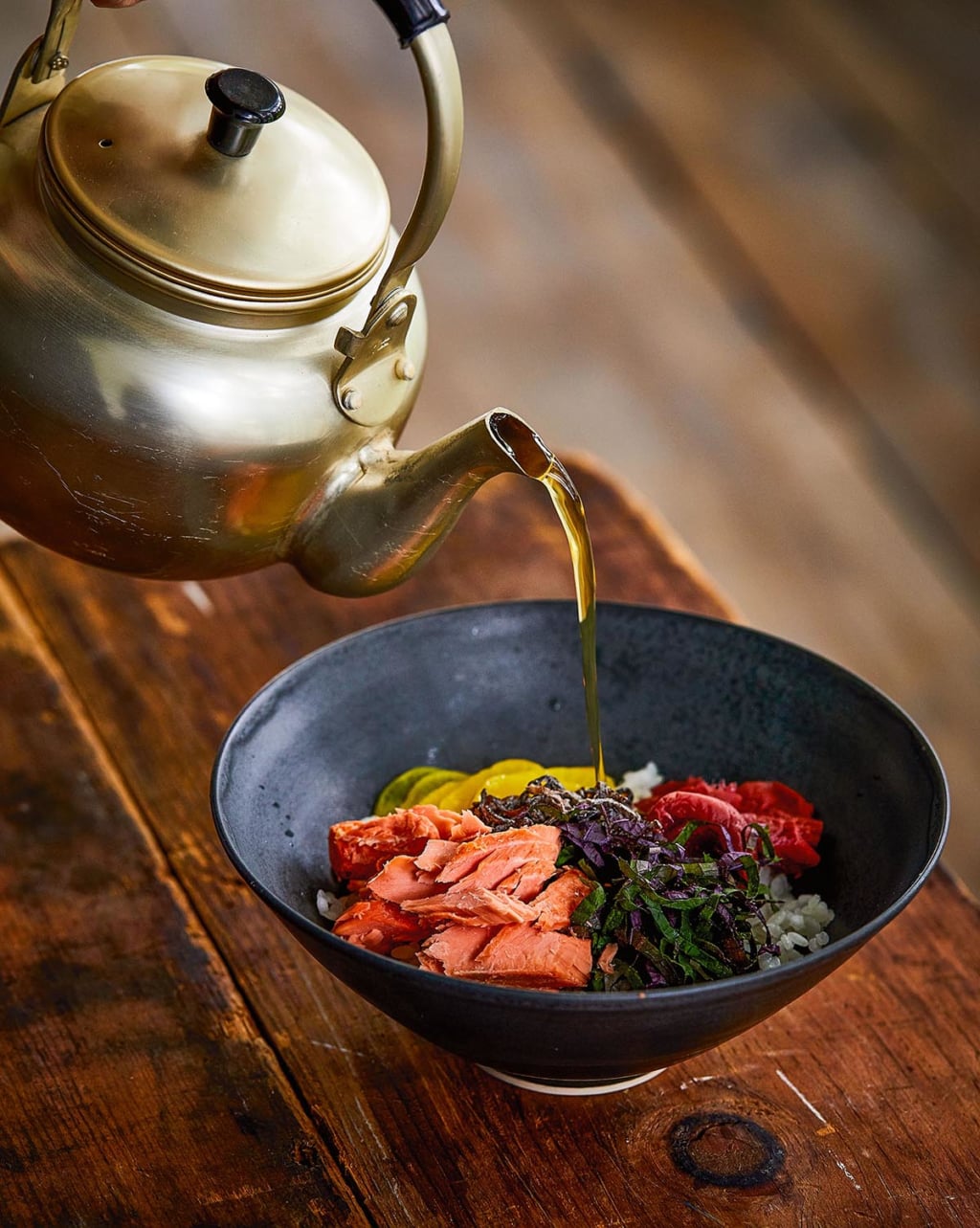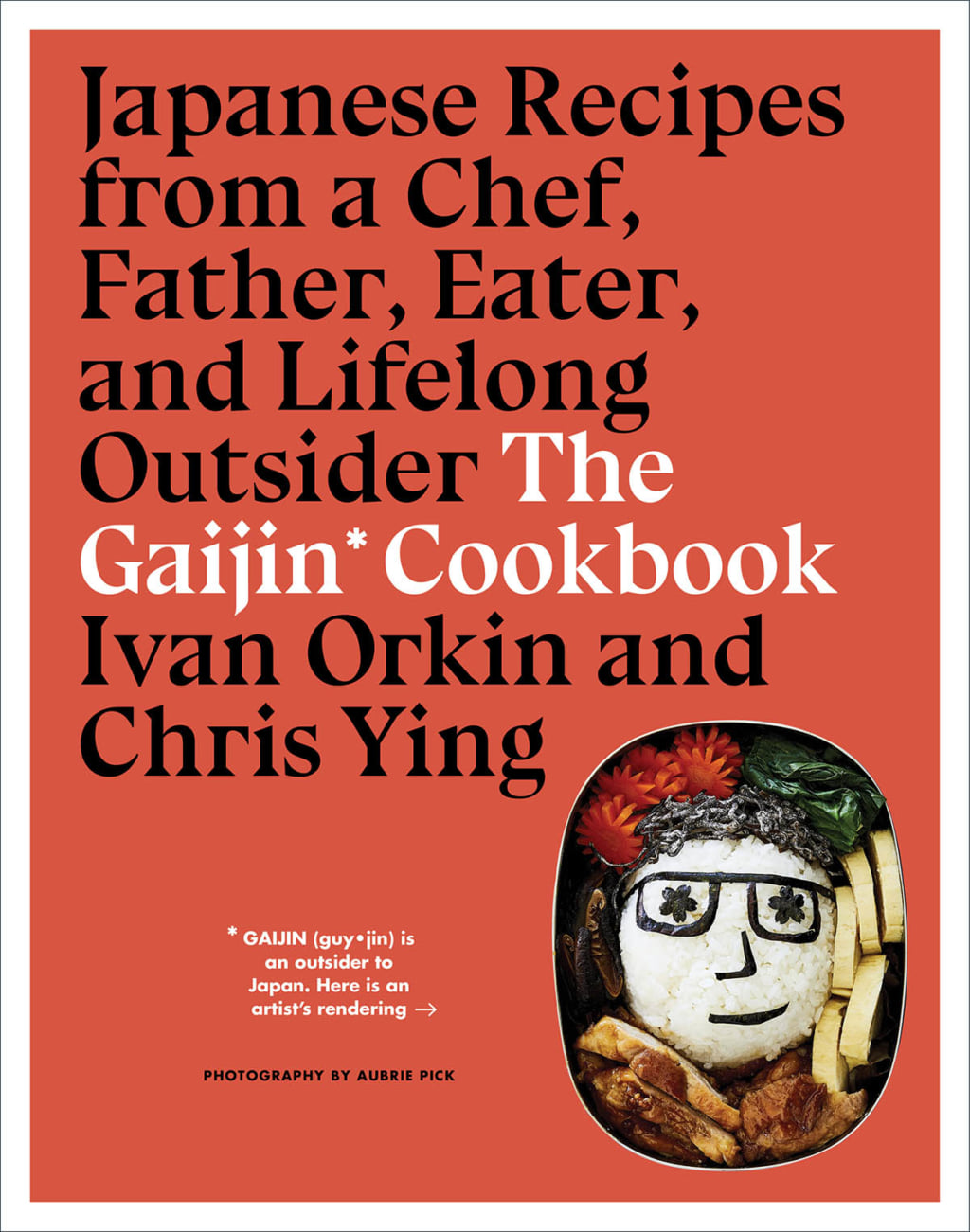Rice with Green Tea and Broiled Salmon by Ivan Orkin
The New York-based chef shares a comforting recipe for ochazuke, a bowl of rice drenched in hot water or green tea.

© Aubrie Pick
The American chef, known for his ramen recipes, shares several of his favourite dishes in The Gaijin Cookbook. One such example is ochazuke, a dish that involves pouring a green tea broth over a bowl of rice that can be garnished. ‘It’s a terrific way to pull together a snack from leftovers, or you can go a more indulgent route with fresh fish and seafood’, the chef explains in the first few lines of his recipe. ‘Ochazuke can easily be kept vegetarian by topping it with things like seasoned spinach, mushrooms or salted seaweed.’
‘The Gaijin Cookbook isn’t a manual for making perfect sushi or a memoir of a great summer in Kyoto. It’s a reflection of a lifetime spent as an outsider looking admiringly at Japan. It’s not a comprehensive guide to Japanese food, but rather a story of my specific experience of it’, Ivan Orkin explains in the introduction to his book The Gaijin Cookbook, co-written by Chris Ying, the co-founder of culinary magazine Lucky Peach.
Makes 5 servings
Ingredients
160 g steamed rice, fresh, or warmed leftovers
You can make a fresh batch, but this dish was originally intended to use up yesterday’s rice. Either way, make sure the rice is warm so it doesn’t cool down the broth too much.
Toppings (choose as many as you like):
60 g broiled salmon (recipe below)
2 seasoned shiitake mushrooms (Shiitake no Amakara ni), sliced thin
1 tablespoon seasoned spinach
1 tablespoon shio kombu (shredded salted seaweed)
4 thin slices takuan (pickled daikon)
3 shiso leaves, sliced into ribbons
1-2 umeboshi (pickled plums), pitted and torn into smallish pieces
1 tablespoon shredded nori
Broth:
250 ml Japanese green tea (sencha, genmaicha, gyokuro, hojicha, etc.) or dashi of your choice, or a blend of the two, kept hot until the last second.
Method
Season the salmon with the salt and let it sit at room temperature for 30 minutes.
Fire up the broiler in your oven or roaster oven. Place the salmon on a foil-lined baking sheet and slide it into the oven, three to four inches from the broiler. Cook for five to seven minutes, depending on the thickness of the fillet, flipping the fish about halfway through cooking and watching carefully to avoid burning. Remove the salmon from the oven when it’s medium-rare, wrap it in the foil, and let cool to room temperature.
Use your fingers or a fork to break the salmon into flakes. Store for up to two days in the fridge.
Scoop the rice into a medium bowl and arrange your chosen toppings around and on top of it.
Pour the tea and/or dashi on top to heat everything through. You can add more broth or toppings if you’d like.
The Gaijin Cookbook (2019), by Ivan Orkin, is published by Houghton Mifflin Harcourt (available only in English).
Ivan Orkin discovered Japan in the 1980s. He opened his first ramen restaurant there in June 2006 in Tokyo’s Setagaya district, then opened a second establishment, Ivan Ramen Plus. After the two restaurants in Japan closed in 2015, Ivan Orkin returned to the USA and he opened two restaurants in New York: Ivan Ramen and Ivan Ramen Slurp Shop.
Ivan Orkin has also written another book, Ivan Ramen, and is one of the stars of the series Chef’s Table and Mind of a Chef on Netflix.

Houghton Mifflin Harcourt
TRENDING
-
A House from the Taisho Era Reveals Its Secrets
While visiting an abandoned building, Hamish Campbell discovered photographs the owner had taken of the place in the 1920s.

-
The Taboo-Breaking Erotica of Toshio Saeki
The master of the 1970s Japanese avant-garde reimagined his most iconic artworks for a limited box set with silkscreen artist Fumie Taniyama.

-
With Meisa Fujishiro, Tokyo's Nudes Stand Tall
In the series 'Sketches of Tokyo', the photographer revisits the genre by bringing it face to face with the capital's architecture.

-
Masahisa Fukase's Family Portraits
In his series ‘Family’, the photographer compiles surprising photos in which he questions death, the inescapable.

-
Hajime Sorayama's Futuristic Eroticism
The illustrator is the pioneer for a form of hyperrealism that combines sensuality and technology and depicts sexualised robots.





